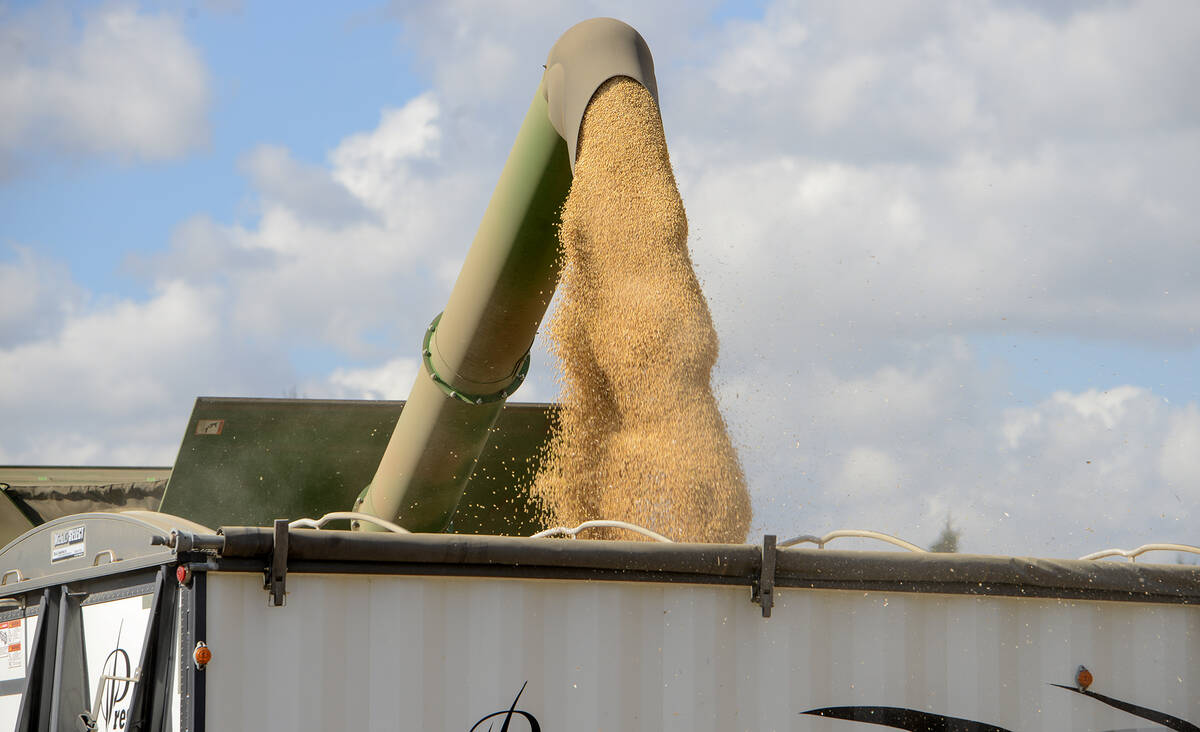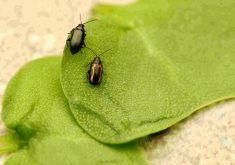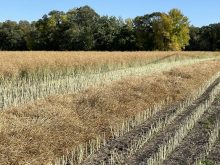It appears clubroot is a fact of life for Manitoba farmers — but it’s still a long ways from the crisis seen in Alberta.
Clubroot symptoms have only been reported in eight Manitoba fields to date; two in 2013 and six in 2015. No Manitoba fields surveyed in 2016 showed any clubroot symptoms. Delving a bit deeper has shown a different story however.
The Pest Surveillance Initiative (PSI) lab has conducted over 800 DNA-based assays to benchmark clubroot incidence in Manitoba, sampling one field from every township or range in the canola-growing areas of Manitoba, as part of a grid sampling project.
Read Also

Grain markets hungry for U.S. data
The U.S. government shutdown meant that futures markets were left without robust grain supply information
- VIDEO: The clubroot situation for Manitoba canola growers
- VIDEO: Get ready to sell your new crop canola
Twenty per cent of the assays have come back positive, indicating that there is a low level of clubroot endemic in Manitoba soils. However, 93 per cent of the samples taken for clubroot have shown concentrations lower than 10,000 spores per gram of soil. Approximately 100,000 spores per gram of soil are required to see infield symptoms.
“The chances are that we’ve had clubroot in Manitoba for quite some time but for whatever reason, it isn’t blowing up at this point like it has in Alberta,” said Holly Derksen, plant pathologist with Manitoba Agriculture in her presentation at the Manitoba Agronomist Conference (MAC) in Winnipeg last December. “With that being said, it’s there and we don’t want to flirt with danger, so we have to keep management techniques in mind when it comes to clubroot as well.”

The Manitoba clubroot distribution map is available on Manitoba Agriculture’s website, but Derksen said that although farmers can consult the map to see the sample results from their region, they should not go by this information alone when calculating clubroot risk.
“One field for every township range is not enough to know exactly what’s out there in your own field, so definitely soil sample your own field,” said Derksen. “Sample approaches, where you’re most likely to see clubroot coming into a field, as well as low-lying areas.”
Canola growers should follow a one-in-three- or one-in-four-year canola rotation, and grow clubroot-resistant varieties as part of their integrated pest management strategy. Because clubroot is a soil-borne disease, biosecurity is also important.
“Practise good sanitation and try to limit the transfer of soil and try to limit soil, and this is especially important for agronomists,” said Derksen. “It’s important to let your growers know what you are doing to limit the transfer of soil. And landowners should protect their land, because things like recreational vehicles or hunters that come on your land should practise biosecurity so they aren’t transferring soil.”
New to Canada
Another disease, verticillium stripe, was first detected in Manitoba fields two years ago. It’s best to scout for verticillium after harvest because it’s a soil-borne disease that comes in later in the growing season. It’s a big problem in Europe where it can cause upwards of 30 per cent yield losses.
“It’s similar to blackleg, but you don’t see big, fruiting bodies that you would on blackleg stubble,” said Justine Cornelsen of the Canola Council of Canada during the same presentation about canola diseases at MAC. “You will see striping and breaking apart of the stalk, and when you look under the epidermis, you’re going to see very faint, black micro-sclerotia, so that is how we identify this disease.”
Ideally, verticillium prefers a wet early season and drier conditions as the crop progresses.
“This is probably why the past few years, it’s stayed subtle,” said Cornelsen. “We figure it’s been around for quite a while but has been misdiagnosed to other diseases because it’s similar to grey stem and can be confused with sclerotinia or blackleg.”
There are currently no foliar or seed treatments or fungicides available to help manage verticillium in Canada. Because it is a soil-borne disease, management will be similar to clubroot, and biosecurity will be crucial, because any movement of dirt has the potential to take verticillium along with it.
In Europe recommendations are to grow canola only every three years to allow for the pathogen within the soil to decline.
“Here in Canada, we just don’t understand it enough, it is a new disease and we will be working towards coming up with a better understanding of how this disease is going to affect growers here in Western Canada,” said Cornelsen.















